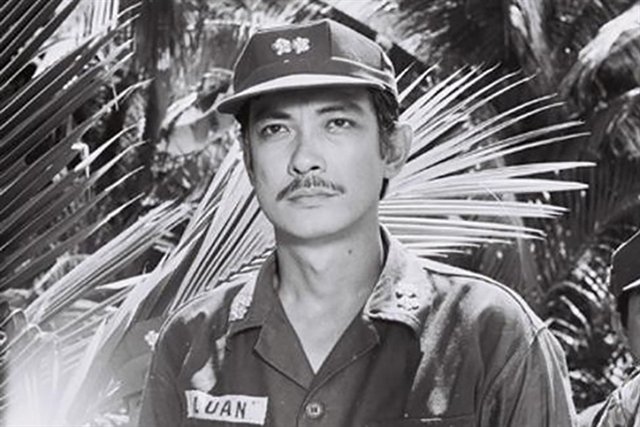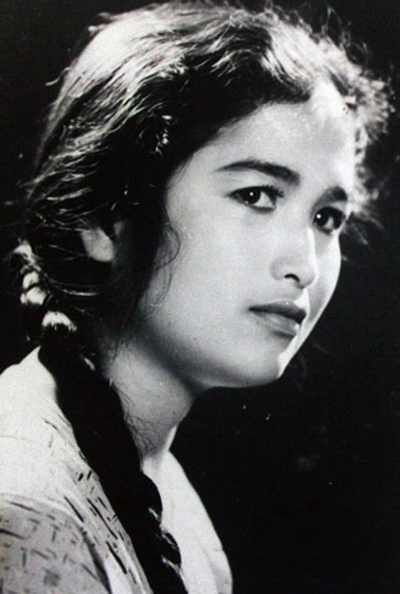 Features
Features

Việt Nam had its own version of James Bond back in the 1980s, featuring a swashbuckling Viet Cong spy who displays incredible levels of patriotism, loyalty, bravery and intelligence. The series still has fans today, as does the late leading man Nguyễn Chánh Tín

|
| Late actor Nguyễn Chánh Tín performs in the series Ván Bài Lật Ngửa (Cards Game Showdown), a spy film about Việt Cộng intelligence agents during the American war. It was the top Vietnamese movie of the 1980s from the HCM City General Film Studio, now the state-owned Giải Phóng Film Studio. (Photo courtesy of the producer) |
by Thu Mai
The top Vietnamese movie of the 1980s, Ván Bài Lật Ngửa (Cards Game Showdown), was part of a popular spy series of films produced by the HCM City General Film Studio (now State-owned Giải Phóng Film Studio).
The series of eight films were adapted from the novel Giữa Biển Giáo Rừng Gươm (In the Midst of Enemies) by revolutionary and historian Trần Bạch Đằng.
The novel is based on the story of a communist secret agent Phạm Ngọc Thảo from North Việt Nam who was a member of the Việt Nam Workers’ Party (now the Communist Party of Việt Nam). Thảo hid under the identity of a senior official working for Ngô Đình Diệm, who served as President of the Republic of Việt Nam from 1955-1963.
The film Ván Bài Lật Ngửa was written and directed by the late Lê Hoàng Hoa, who worked on 100 movies and videos before and after 1975. It starred Nguyễn Chánh Tín in the leading role.
Released in 1982, the first film, Đứa Con Nuôi Vị Linh Mục (The Archbishop’s Foster Son), was a huge hit in the industry.
The work portrays Nguyễn Thành Luân, a Việt Cộng (Vietnamese communist) agent who went undercover in the government of South Việt Nam as a foster son of Archbishop Ngô Đình Thục, an elder brother of President Diệm.
Director Hoa used a realistic story mixed with fantasy to feature Luân’s secret activities and the risks he faced of being discovered by his enemies. Patriotism, loyalty, bravery and intelligence were also highlighted in the film.
The film won the Special Prize for Feature Film at the sixth Việt Nam Film Festival in 1983.
In 1985, the fourth film Cơn Hồng Thủy Và Bản Tango Số 3 (The Flood and Tango No 3) won the Silver Lotus award, the top prize for best feature film at the seventh Việt Nam Film Festival.
The sixth film, Lời Cảnh Cáo Cuối Cùng (The Last Warning) in 1987 continued to make waves among critics and audiences. Several thousand people in Hà Nội flocked to the Tháng Tám Cinema to watch Tín on screen.
One year later, Tín was awarded the Best Film Actor at the eighth Việt Nam Film Festival in Đà Nẵng Province.
“Ván Bài Lật Ngửa highlights the contribution of Việt Cộng agents to the cause of national liberation and reunification,” female director Lê Phong Lan of Bản Sắc Việt Studio, one of HCM City’s private film companies, said.
“It is still fresh and considered the peak of the Vietnamese spy film, although local producers have released dozens of high-tech spy works in the past decades.”
Agent Nguyễn Thành Luân
The late actor Nguyễn Chánh Tín, who was from Sài Gòn (now HCM City), was chosen to play agent Luân among a group of several movie stars and skilled actors.
Tín was born into a family with a martial arts tradition. His nephews, Charlie Nguyễn and Johnny Trí Nguyễn, are the well-known Vietnamese-American film producer and actor, respectively. Both work in HCM City.
Tín began his career as a singer and first appeared in a movie in 1972 in Sài Gòn.
After 1975, he had leading roles in many films and videos by award-winning directors such as Nguyễn Hồng Sến. However, it was his role as a Việt Cộng agent in Ván Bài Lật Ngửa that shot him to fame.
“Many fans who lived in the 1970s and 80s have never forgotten Tín’s good looks and character in Ván Bài Lật Ngửa,” said Đỗ Thị Vân Giang, a fan from Hà Nội.
“He was called Việt Nam’s Alain Delon after the French cinema legend.”
His last project was a comedy series from HCM Television which aired in 2017.
His died in his sleep at the age of 67 in HCM City in January this year. It was a shock for millions of Vietnamese fans at home and abroad.
Many fans posted comments on social media, saying “Farewell, Nguyễn Chánh Tín - Agent Luân! Rest in Peace!”
“Nguyễn Chánh Tín was an outstanding actor who left a long-lasting impression in the hearts of Vietnamese fans for his talent and passion in every role," said Deputy Minister of Culture, Sport and Tourism Tạ Quang Đông.
"He was part of and witnessed the growth of our cinema," he added.
Revolutionary films

|
| A scene from Chị Tư Hậu (Mrs Tư Hậu) by late director Phạm Kỳ Nam in 1963. The film features the beauty and bravery of southern women. It is one among revolutionary films from 1962 to 1975 that helped pushed the industry to higher heights. Photo courtesy of the producer |
The Vietnamese revolutionary motion picture industry was established officially in March 1953, but activities actually started in 1947 when the Southern Cinematography and Photography Branch (SCPB) opened in the Đồng Tháp Mười region (now located in Đồng Tháp, Tiền Giang and Long An provinces).
Films by southern artists of the SCPB during the French and American wars are considered canons of the art.
SCPB artists such as Mai Lộc, Khương Mễ and Trần Kiềm worked hard to make lively war documentaries and films. Some of the artists died during the period.
The first work of SCPB was Trận Mộc Hóa (Battle in Mộc Hóa) in 1948, a documentary by the late cameraman, film director and People’s Artist Khương Mễ and his colleagues, People’s Artist Mai Lộc and Meritorious Artist Vũ Sơn.
The film was first released in December 1948, featuring the victories against the French of Battalion 307's soldiers. It won the Silver Lotus award at the second Việt Nam Film Festival in 1973.
The film’s director Mễ received the Licorne d’Or at the Amiens International Film Festival in France in 1997.
Films by younger generations such as directors Mai Lộc, Phạm Kỳ Nam, Hải Ninh, Nguyễn Hồng Sến and Trần Khánh Dư pushed the Vietnamese revolutionary film to higher heights from 1962 to 1975.
Many of their works featured the beauty and bravery of Vietnamese women. They are still being used to train students at art schools at home and abroad.
Highlighted films include Chị Tư Hậu (Ms Tư Hậu) by late director Nam in 1963 and Vĩ Tuyến 17 Ngày Và Đêm (17th Parallel -- Days and Nights) by Hải Ninh in 1972. Both productions focus on southern women and their characteristics.
Through the films, talented actresses Trà Giang, Bích Liên and Thụy Vân rose to fame and became the industry’s first movie stars. Giang won the best actress prize at the Moscow International Film Festival in 1963 and 1973.
“Revolutionary films help young people of different generations learn about the country’s heroic history and culture,” said director Lan of Bản Sắc Việt Studio.
“The Việt Nam Cinematography Association and HCM City Cinematography Association should work more closely to maintain the quality of films produced during the revolution because they are part of the country’s history,” she said. VNS




